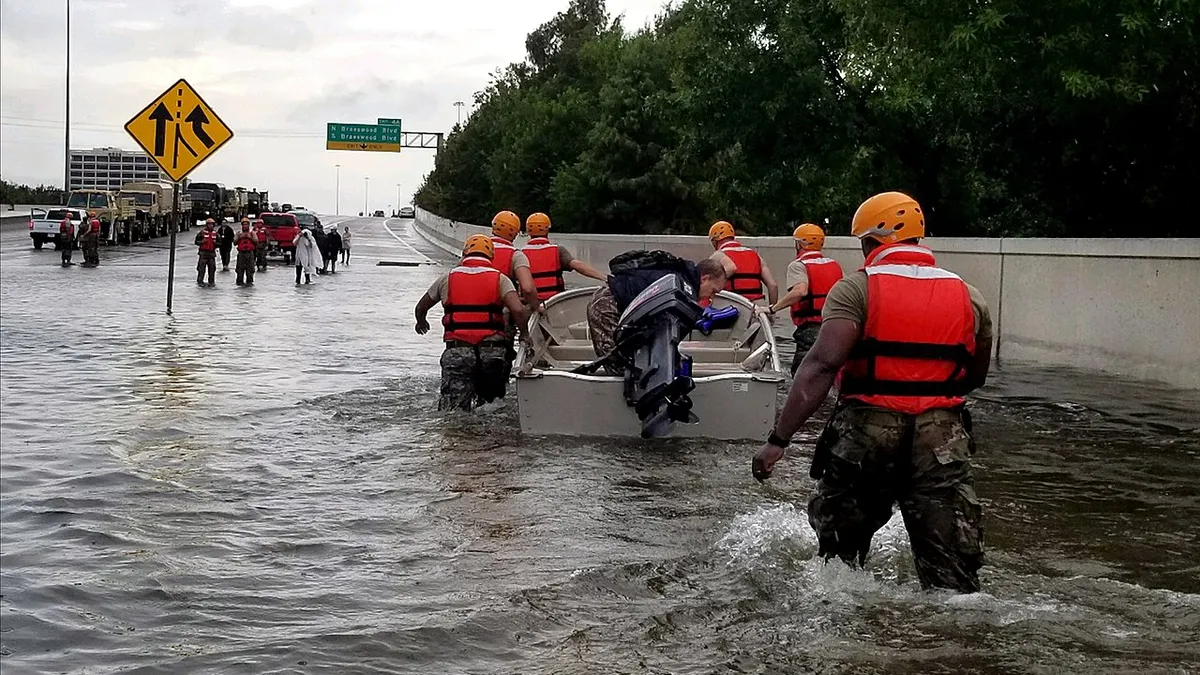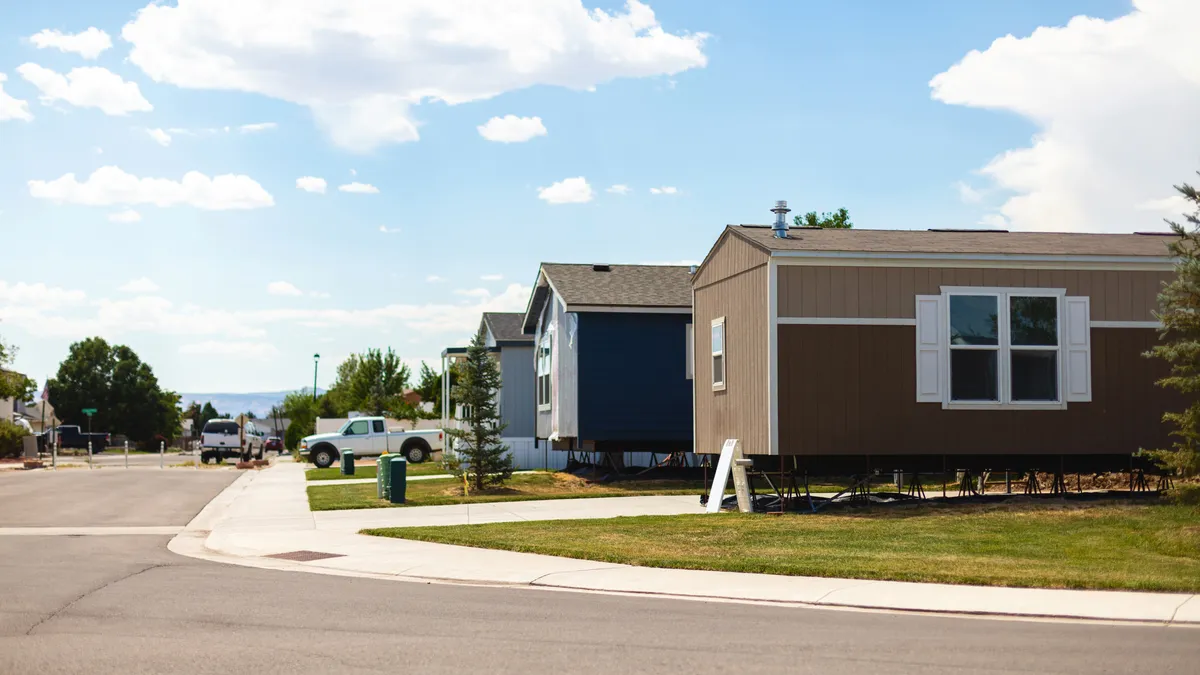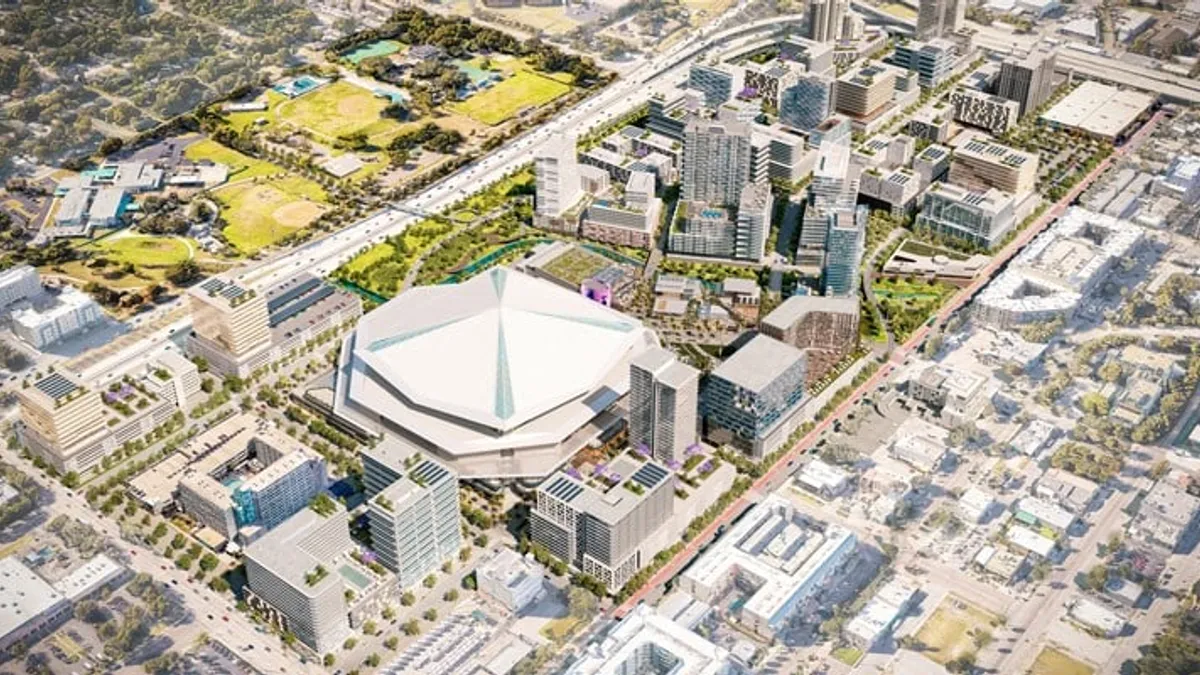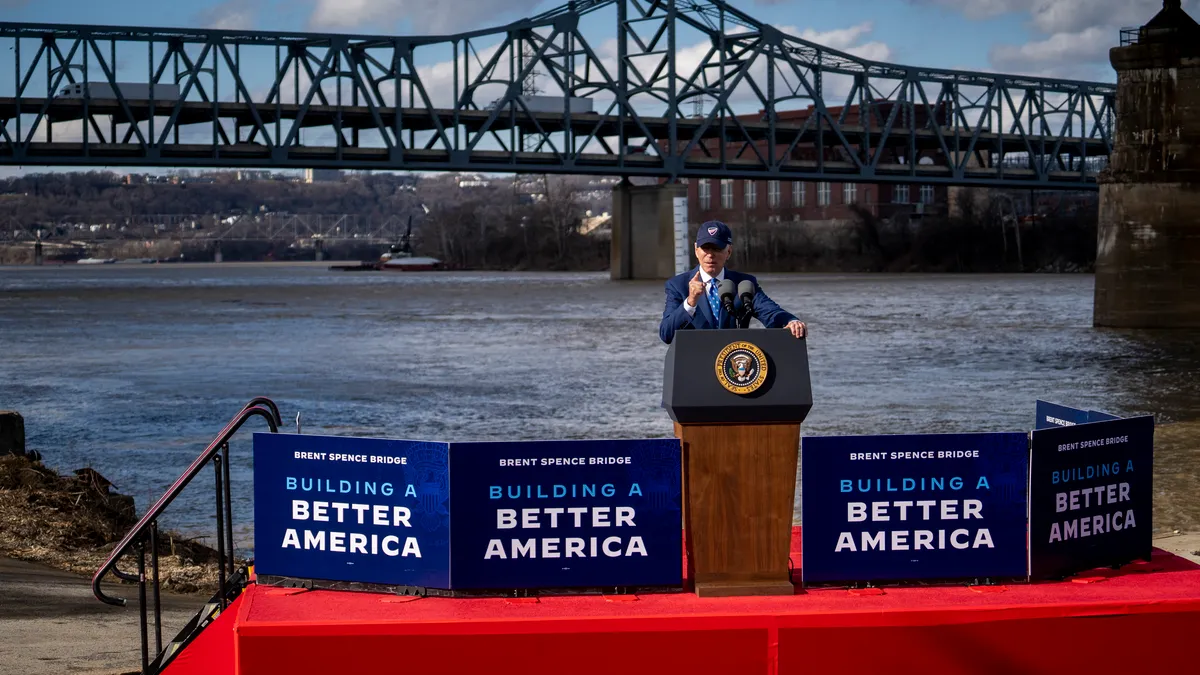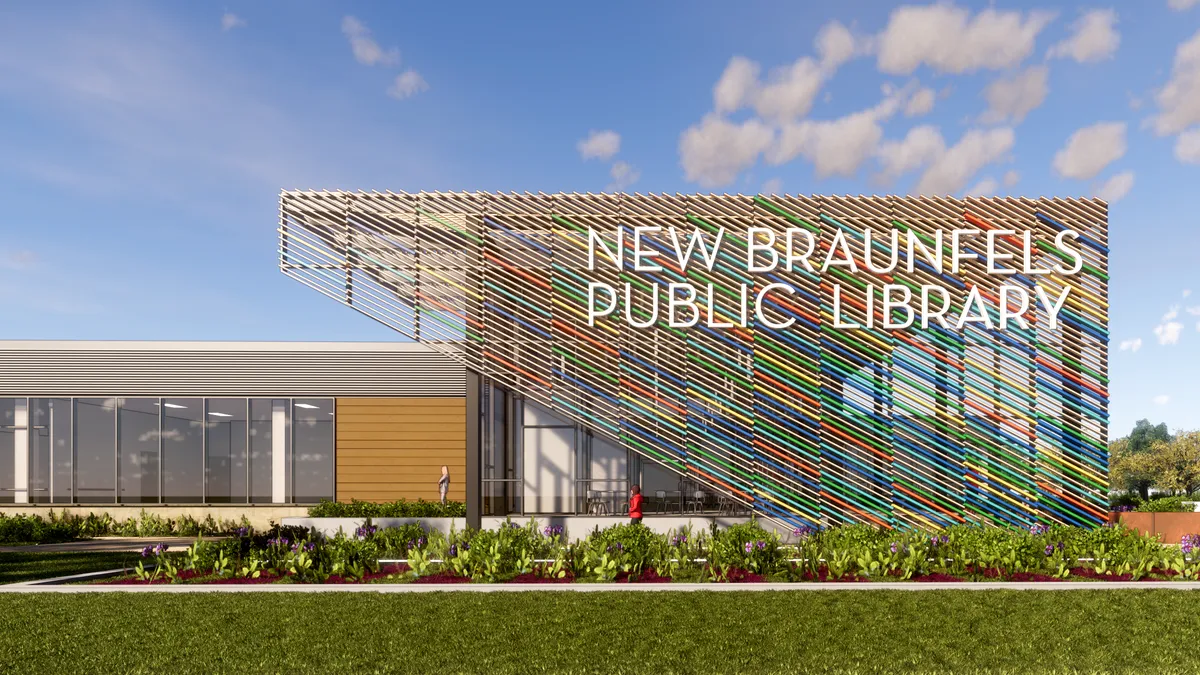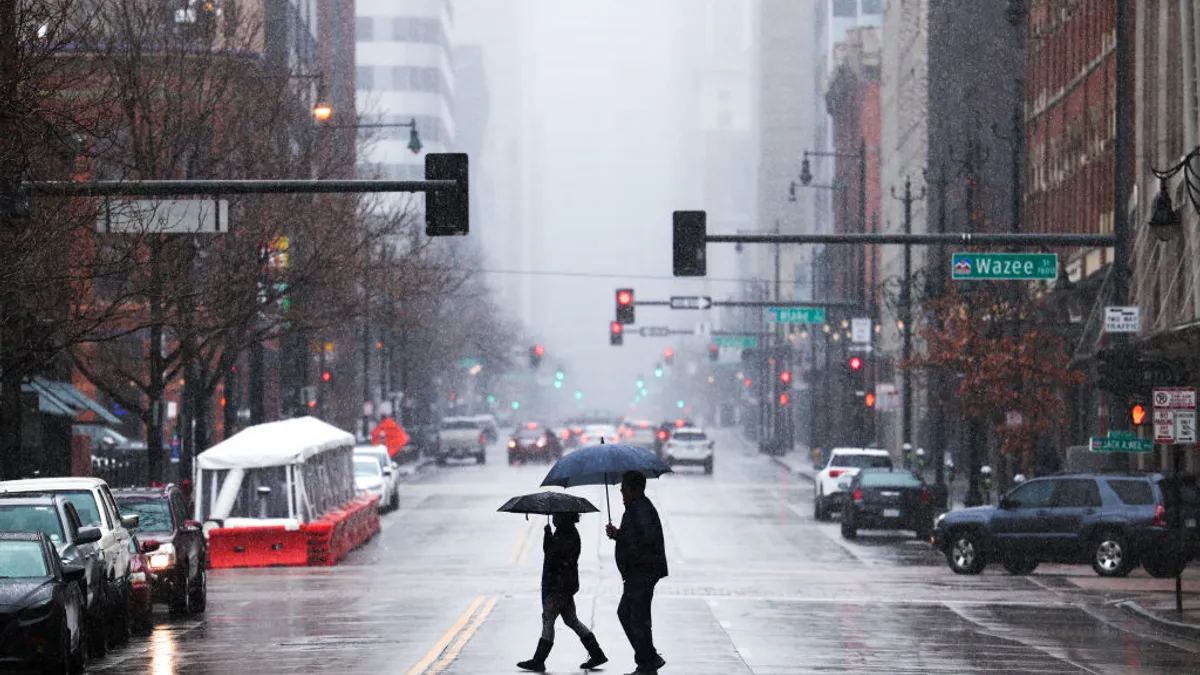Storms have reached historic levels of intensity and damage in recent years. From Hurricanes Harvey and Maria in 2017 to Hurricane Michael in 2018, natural disasters have underscored the importance of cities having preparedness plans in place.
Last fall, technology and innovation solutions company Venture Smarter brought together government, private and nonprofit partners for an event focused on building resilience and using technology to improve communities' hurricane preparedness, response and recovery.
For this National Hurricane Preparedness Week, Smart Cities Dive spoke with Rhonda Binda, vice president of policy and director of regional smart city initiatives at Venture Smarter, about hurricane and general emergency preparedness and how it plays into a city's resilience.
This interview has been edited for brevity and clarity.
SMART CITIES DIVE: What trends are you seeing in terms of cities' hurricane — and other weather-related disaster — preparedness, especially with technology use?
RHONDA BINDA: The incidence of weather-related disasters is increasing at record-breaking rates. It has really become top-of-mind for all the emergency preparedness professionals, and there's been a lot more coordination... I'm seeing how [the federal government] has been working in the inter-governmental space with cities and states... Part of what Venture Smarter has been doing is working with them to make sure that they're supporting the best innovations across the country on a federal level and [cities] are sharing best practices with other communities facing the same challenges.
For example, in preparation for flooding, the city of Denver is using virtual reality (VR) technology with stakeholders from the community — organizations, government and businesses — to [virtually] walk downtown and see what would happen if the area were to flood. It's using VR in a much more creative way to put emergency responders and regular citizens into the situations so if these occurrences were to happen, there would be a familiarity and they already would have training on how best to respond.
The intersection between how technology is helping to support emergency preparedness professionals and what they're doing to leverage it in terms of apps and upgrading their systems for better communication across the board and sharing data, there's been a lot of progress in that area. We're happy to see that.
A lot of these systems we're seeing run on high-speed or other networks that are secured for emergency responders, but I do think 5G also plays a role in our response and our rescue efforts afterward. It will be interesting to see with the advent of 5G how much better first responders can do their jobs and save lives by utilizing this new technology.
Cities and states and the federal government have a lot of resources to help [citizens] prepare... You're never far away from these types of risks and there are certain things to know... to best prepare in advance.
Explain why advance hurricane preparation is so important.
BINDA: We are encouraging cities — especially coastal cities — to be a lot more proactive so not as much damage is done. You can see the difference in damage between when there's a hurricane in places like Haiti, Puerto Rico or somewhere else in the Caribbean, because their infrastructure is not as solid as in the United States... A lot of what we see with cities that are better prepared, such as in the United States versus the Caribbean, is it makes a big difference from a financial perspective afterward. We see that happening with Puerto Rico, where costs are high to build back [after Hurricane Maria] because the proper infrastructure was not in place to begin with.
That's why at Venture Smarter we're 100% focused on building smarter, more connected communities, but that's with respect to building smarter infrastructure, making sure that our building standards are becoming more stringent and our standards for building neighborhoods are using state-of-the-art technology. It comes down to being better prepared and more resilient for all the things that can happen in the future.
Instead of being reactive to what's going to happen, we want to get at it from a more proactive standpoint, but also look at it through an economic development lens — how it can help communities and people and the development of neighborhoods, and have the best and most efficient use of resources, while still being at harmony with your built and natural environment.
Do you take equity into account and try to bridge the digital divide with preparedness solutions?
BINDA: For sure. Especially in the face of an emergency, communication is one of the most important aspects of getting to those the most in need first. That's why it's been great to see that even among different first responder agencies, there's much better communication now. We have to think about how we ensure there is availability for connectivity all across a city so we can save as many lives as possible and those who are the most vulnerable are not left behind.
You talked about the importance of connectivity, but that can be knocked out hurricanes or other storms. How should cities plan for that?
BINDA: Look at the connectivity of energy [and] of communications systems. There definitely needs to be a plan to protect these utility infrastructures during a storm. One of the things we see is the use of smaller tech solutions that would back up the systems. We've seen a lot of interesting battery and satellite technology used as a redundancy plan.
One thing I know New York does is implement a combination of adaptation strategies. That means flood-proofing critical equipment, installing back-up systems, installing temporary barriers and sealing buildings before a storm — particularly with respect to utilities and critical infrastructure — so they're climate ready... If those things go down, it becomes a lot more difficult to recover.
That's a lot of things for a city to do in advance of a storm. Can cities ease the burden by working with private partners?
BINDA: Yes, and I see parallels in this area and in other security areas, like cybersecurity. There's definitely a strong partnership aspect — not only with government, you also have to work with the businesses that are in these areas.
Look at lower Manhattan, for example; it's the banking capital of the world. They have deep concerns about what would happen in the event of the sea rising and what would happen to that entire business district. That has repercussions far beyond New York City. There are resilient neighborhood studies and plans that involve working in conjunction with the private sector.
Already in a city... there are chambers of commerce and business improvement districts and associations... Make sure in the case of an incident that [businesses] are able to get the resources they need, and vice versa, that they're cooperating in terms of providing supplies and being available — if they have backup generators, for example. It's understanding where the assets are both from the public sector and the private sector standpoint so there can be a better response. We did see the communities and various stakeholders come together in this way with Hurricane Sandy.
How about partnerships with other cities?
BINDA: Weather events do not see borders and municipal lines, and it really makes even more important the approach we've been taking in terms of coordination across intergovernmental and municipal lines. The [preparedness] plans that cities are putting together are more holistic than in the past. They're not only about how to make your area and your community more resilient, but they're putting together more coordinated efforts to help one another.
I commend the unprecedented coordination I've seen between cities, their first responder agencies and on a regional basis. We really do believe the regional approach is the wave of the future to best prepare for the challenges we have ahead.



